Geological timescale
The geological time scale is a framework that organizes Earth’s history into a hierarchical structure of divisions based on significant geological and biological events. It provides a chronological order of the major geological and biological changes that have occurred over billions of years. Here is an overview of the geological time scale, starting from the largest divisions and moving towards smaller ones:
Table of Content:
Eons
Eras
Periods
Epochs
Ages

Eons:
The largest divisions of the geological time scale are eons, which encompass billions of years. There are four recognized eons: Hadean, Archean, Proterozoic, and Phanerozoic.
Hadean Eons:
This eon spans from the formation of Earth around 4.6 billion years ago to about 4.0 billion years ago. It is characterized by the early stages of Earth’s formation, including intense volcanic activity, the formation of the crust, and the bombardment of the planet by asteroids and comets.
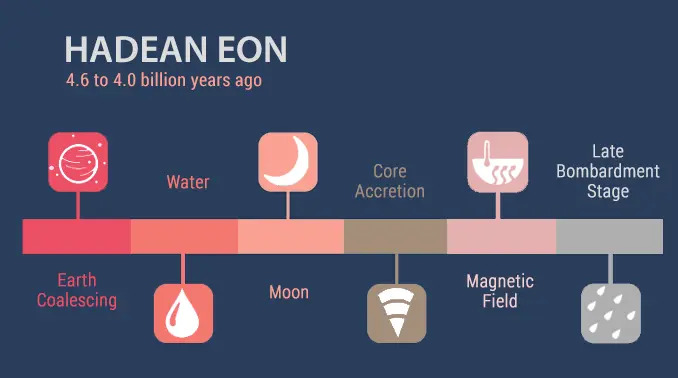

Archean Eon:
The Archean Eon extends from about 4.0 billion years ago to 2.5 billion years ago. It is marked by the emergence of life, the oxygenation of the atmosphere due to photosynthetic organisms, and the formation of the first continents.
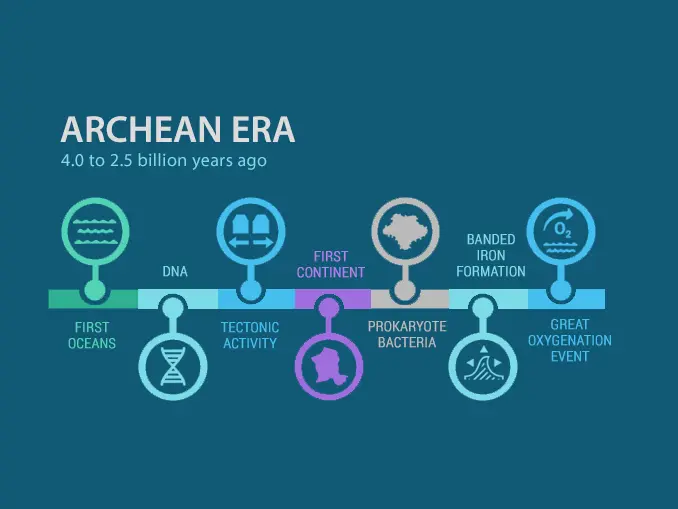

Proterozoic Eon:
This eon spans from about 2.5 billion years ago to 541 million years ago. It is characterized by the diversification of life forms, including the emergence of eukaryotic cells and multicellular organisms. Oxygen levels continued to rise during this eon.
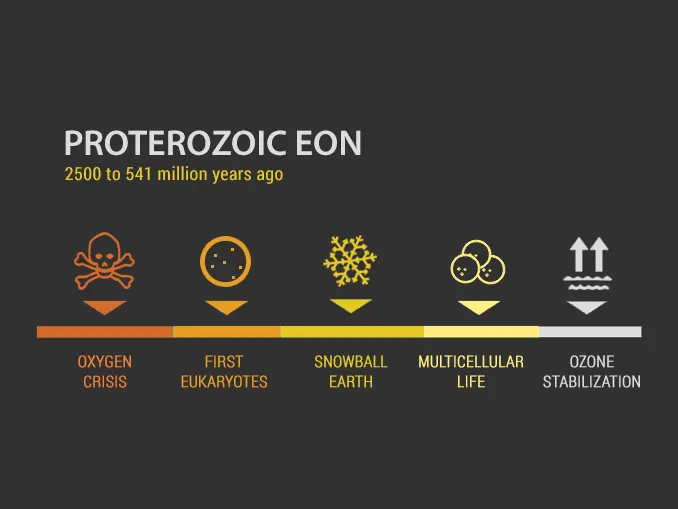
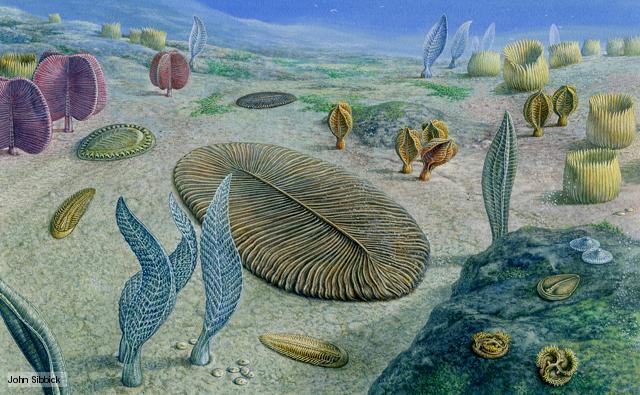
Phanerozoic Eon:
The Phanerozoic Eon is the most recent eon and began about 541 million years ago and continues to the present day. It is divided into three eras: the Paleozoic, Mesozoic, and Cenozoic. The Phanerozoic Eon is known for the proliferation of complex life forms, including the evolution of vertebrates, the rise and fall of the dinosaurs, and the eventual emergence of mammals and humans.


Phanerozoic Eon: It is divided into three eras: the Paleozoic, Mesozoic, and Cenozoic.
Eras:
Eons are further subdivided into eras, which represent significant intervals of geological time. There are three eras within the Phanerozoic Eon: Paleozoic, Mesozoic, and Cenozoic.
Paleozoic Era (541 to 252 million years ago):
The Paleozoic Era, also known as the “Age of Ancient Life,” is characterized by the emergence and diversification of complex life forms. It spans a vast period of Earth’s history and is marked by several significant events:
Cambrian Explosion:
The Paleozoic began with the Cambrian explosion, around 541 million years ago. This explosion of life saw the rapid diversification of various marine organisms, including the appearance of the first known complex animals with shells, exoskeletons, and distinct body plans.
Marine Dominance:
Throughout the early Paleozoic, marine life dominated the oceans. Brachiopods, trilobites, and other creatures thrived in these ancient seas.
Land Colonization:
Around 500 million years ago, the first land plants and arthropods began to colonize terrestrial environments. This marked the beginning of life’s expansion onto land.
Devonian Forests and Fish:
During the Devonian period, roughly 419 to 359 million years ago, forests of primitive plants emerged, providing habitats for a variety of animals, including the first tetrapods (four-limbed vertebrates) that ventured onto land from water.
Carboniferous Coal Swamps:
The Carboniferous period (359 to 299 million years ago) was marked by the growth of massive coal-forming swamps, populated by a diversity of amphibians and early reptiles. The remains of these swamps would eventually become the coal deposits we use today.
Permian Extinction:
The Paleozoic Era concluded with the Permian period (299 to 252 million years ago), but it ended with the most severe mass extinction in Earth’s history—the end-Permian mass extinction. This event led to the loss of over 90% of marine species and around 70% of terrestrial vertebrate species.
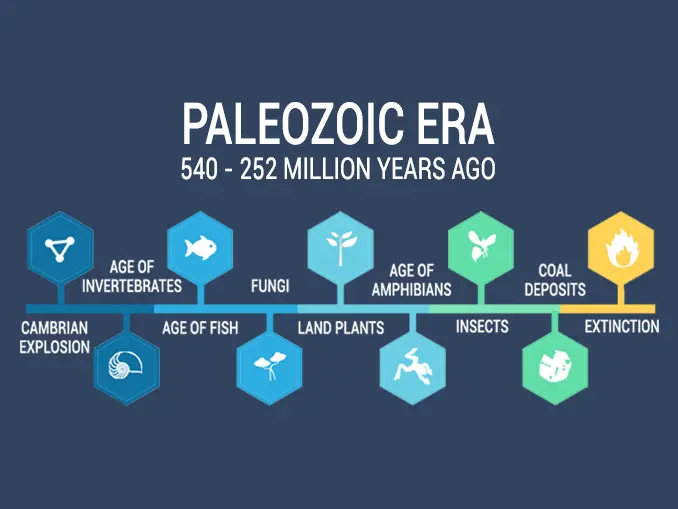

Mesozoic Era (252 to 66 million years ago):
The Mesozoic Era, known as the “Age of Dinosaurs,” is a time of dramatic change and the dominance of reptiles. It’s divided into three periods:
Triassic Period (252 to 201 million years ago):
This period followed the end-Permian extinction and saw the rise of early dinosaurs, reptiles, and the first mammals. The supercontinent Pangaea formed during this time.
Jurassic Period (201 to 145 million years ago):
Dinosaurs diversified during this period, with iconic creatures like the massive sauropods and fearsome theropods coming into prominence. The first birds and mammals also emerged.
Cretaceous Period (145 to 66 million years ago):
This period continued the dominance of dinosaurs, including the evolution of advanced theropods like Tyrannosaurus rex. Flowering plants (angiosperms) flourished, and the Cretaceous ended with a mass extinction event caused by an asteroid impact, leading to the extinction of non-avian dinosaurs.
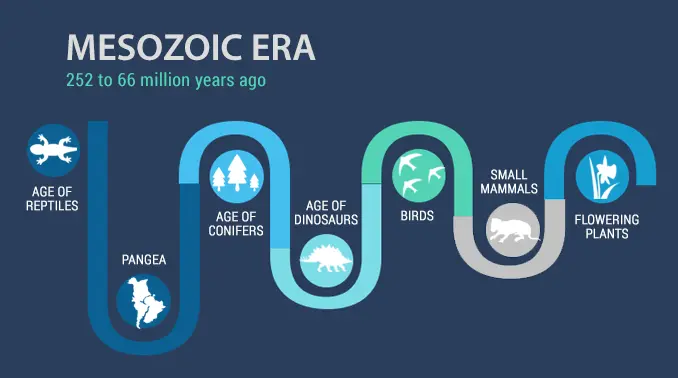
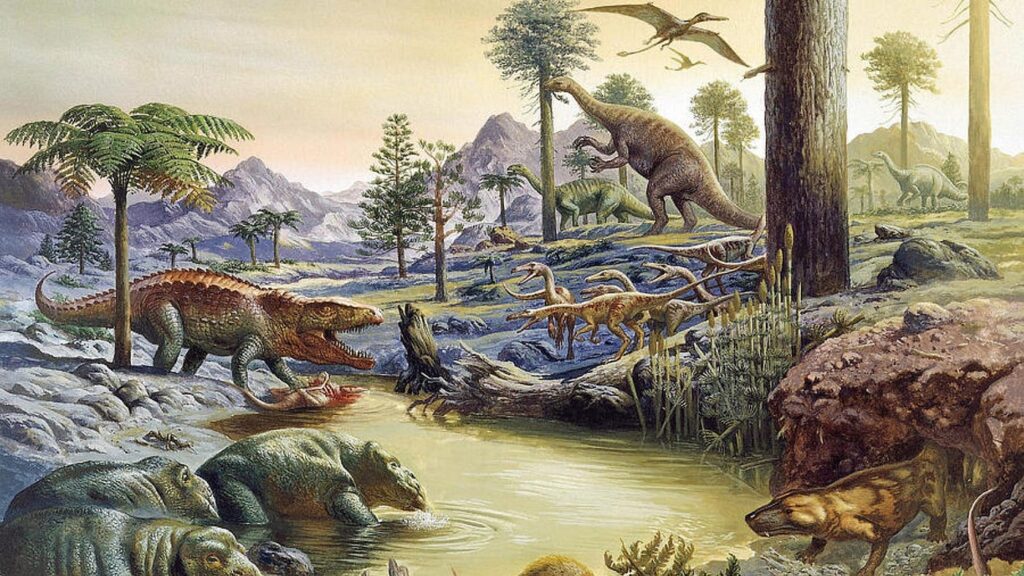
Cenozoic Era (66 million years ago to present):
The Cenozoic Era, often called the “Age of Mammals,” is divided into two main periods:
Paleogene Period:
This period (66 to 23 million years ago) witnessed the recovery from the Cretaceous-Paleogene mass extinction. Mammals diversified and occupied ecological niches previously held by dinosaurs.
Neogene and Quaternary Periods:
These periods (23 million years ago to the present) have seen the further evolution of mammals, including the emergence of early humans during the Pliocene. The Pleistocene epoch within the Quaternary is known for ice ages and the eventual rise of modern humans (Homo sapiens) in the Holocene epoch.
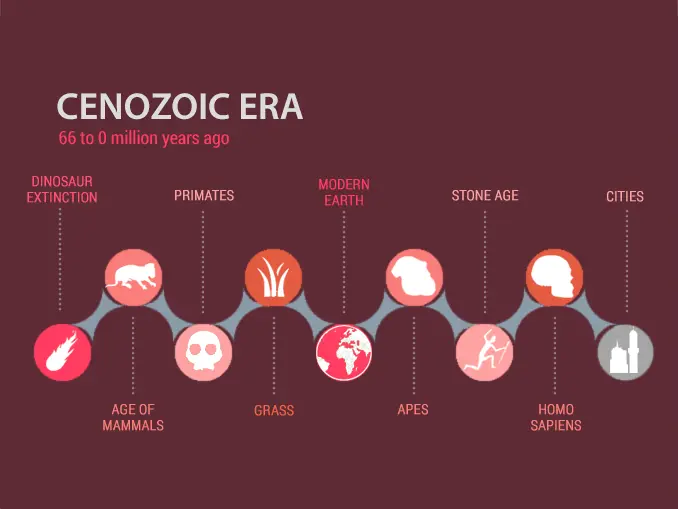
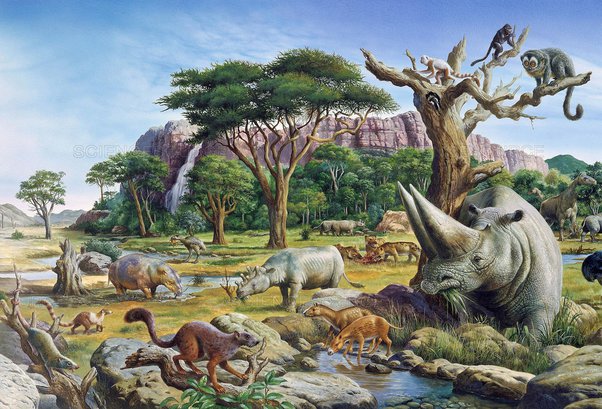
Periods
Eras are divided into periods, which are marked by distinct geological and biological characteristics. For example, the Paleozoic Era includes periods such as the Cambrian, Devonian, and Permian.
Cambrian Period (541 to 485 million years ago)
Devonian Period (419 to 359 million years ago)
Permian Period (299 to 252 million years ago)
Epochs:
Periods are further divided into epochs, which are shorter time intervals. Epochs are defined by specific changes in Earth’s geological and biological conditions. The Cenozoic Era, for instance, is divided into epochs like the Paleocene, Eocene, and Holocene.
1. Holocene Epoch (11,700 years ago to present)
2. Pleistocene Epoch (2.6 million to 11,700 years ago)
3. Pliocene Epoch (5.3 to 2.6 million years ago)
4. Miocene Epoch (23 to 5.3 million years ago)
5. Eocene Epoch (56 to 33.9 million years ago)
6. Paleocene Epoch (66 to 56 million years ago)
Ages:
The smallest units of the geological time scale are ages, which represent even shorter time intervals. Ages are characterized by specific geological and biological events. For example, the Holocene epoch within the Cenozoic Era has multiple ages, each representing different stages of recent Earth history.
1. Holocene Age (11,700 years ago to present)
2. Meghalayan Age (4,200 years ago to present)
3. Northgrippian Age (8,300 to 4,200 years ago)
4. Greenlandian Age (11,700 to 8,300 years ago)
5. Upper/Late Pleistocene (126,000 to 11,700 years ago)
6. Middle Pleistocene (781,000 to 126,000 years ago)